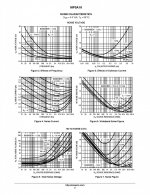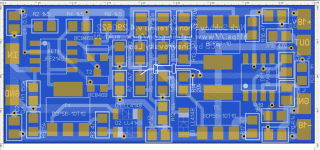You with dreamth stubbornly refuse to admit the obvious. Even in the datasheet of the MPSA 18 you mentioned (see my attachment, pay special attention to the optimal current in fig.6 and fig.7). Your answers are beginning to convince me that you both need more self-education.Look at the data sheet for the MPSA18. At 10 uA collector current the beta is way down.
Attachments
Last edited:
see with no comments: https://www.patreon.com/posts/bez-kommentariev-72574452 https://www.patreon.com/posts/insaidnyi-ot-vip-72574505 https://www.patreon.com/posts/nabiraem-po-su-v-72330414Nearly 400 posts in this thread in less than 3 months. How many DIYers have purchased/built the phono stage and empirically evaluated its merits?
I think that since the JFET has so little current noise you can get better results than you get with a BJT. I Rember that when Professor Leach redesigned his phone preamp to use JFET input devices and ran them at a high bias current, he obtained a much higher slew rate. I have no idea if that makes any difference in the sound.
I trully doubt that you want high slew rate with phono preamps...Professor Leach redesigned his phone preamp to use JFET input devices and ran them at a high bias current, he obtained a much higher slew rate. I have no idea if that makes any difference in the sound.
A high transconductance JFET results in lower noise, more transconductance and better HF behaviour (important for feedback loop stability) than an optimally or near-optimally biased discrete bipolar transistor, so I normally use JFETs.
So, you do obtain better results with a JFET. Some FETs I didn't consider good candidates for phono preamps. I admired the old 2sk147 for its low noise and high transconductance but it achieved that transconductance with a large interdigitated gate structure so it had high interelectrode capacities. If I recall, it had about 15 pF gate to drain capacity. Any reasonable gain and you had a big miller effect capacity.
Last edited:
Too large capacitances are definitively inconvenient. A large gate-to-anything capacitance also has an effect on noise current, related to the way channel thermal noise is calculated back to the input, but that is usually negligible for MM amplifiers unless you use a really huge JFET (I wouldn't be sure it is negligible for an InterFET IF3601).
Regarding Miller effect, I agree when you use the JFET as a common-source stage with no feedback. It does not necessarily affect the closed-loop input capacitance when you put it in a feedback loop, as explained in the attachment.
Regarding Miller effect, I agree when you use the JFET as a common-source stage with no feedback. It does not necessarily affect the closed-loop input capacitance when you put it in a feedback loop, as explained in the attachment.
Attachments
Looks good, but why is that 100k resistor piggy-backed on that chip?
It is DCservo modification for using not only newest modern JFE2140 matched JFET pair with 4 mV VGS mismatch but also LSK389 in SOIC with 20 mV mismatch or even discrete selected JFE150. Resistor can be soldered any way not only with smd but also using axial mount type [ https://www.patreon.com/posts/72574505 ] PS. You can see and buy full DIY kit here https://imrad.com.ua/ua/fonokorektor-sy-xxi-v-4-dlya-golovok-zvukoznimacha-z-ruhomim-magnitom-mm-Looks good, but why is that 100k resistor piggy-backed on that chip?
Last edited:
Nick, I suppose there are interested users not brave enough to modify their turntable. Let them enjoy the preamp in conventional, stand alone setup with cable connection and 47k input impedance. Later, some of them will probably decide to exploit the full potential and mount it inside their turntable enabling much higher input impedance.
I think possibility to use it in conventonal way if desired should be more clearly stated with instructions how to do it. That will attract broader audience.
I think possibility to use it in conventonal way if desired should be more clearly stated with instructions how to do it. That will attract broader audience.
That's impossible due to the 47pF input loading limit...I think possibility to use it in conventonal way if desired should be more clearly stated with instructions how to do it. That will attract broader audience.
The problem with modding most turntables is that you need enough space inside far away of the motor and stroboscope circuitry .I used my own preamps inside my dual 701 which has no problem with motor noise, but I had to use a switch to bypass the strobe lights when not used to check the speed...
Yes. For those interested in using this nice preamp but not (yet) willing to modify their turntable.
The assembly is not done neatly . Large solder surges . The flux remains have not been removed . The assembly was done unprofessionally .
Last edited:
- Home
- Vendor's Bazaar
- Nick Sukhov SU-XXI MM Phono stage -85 dBA SN ratio...

